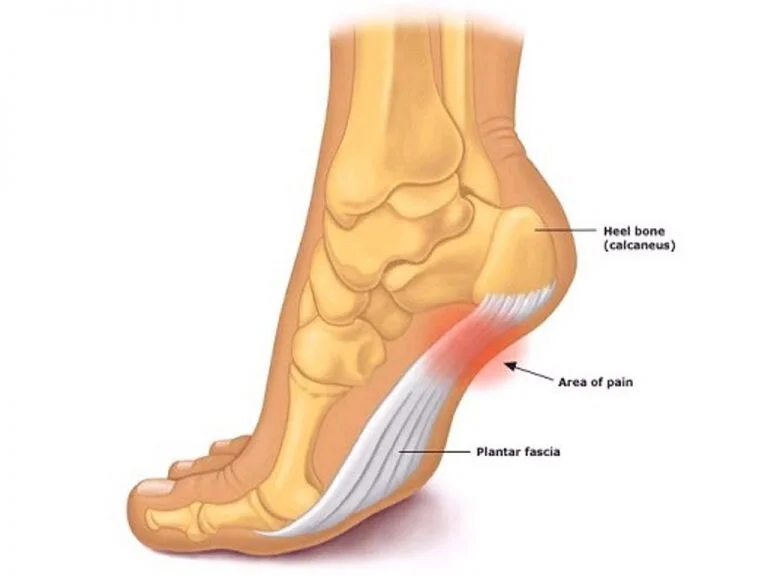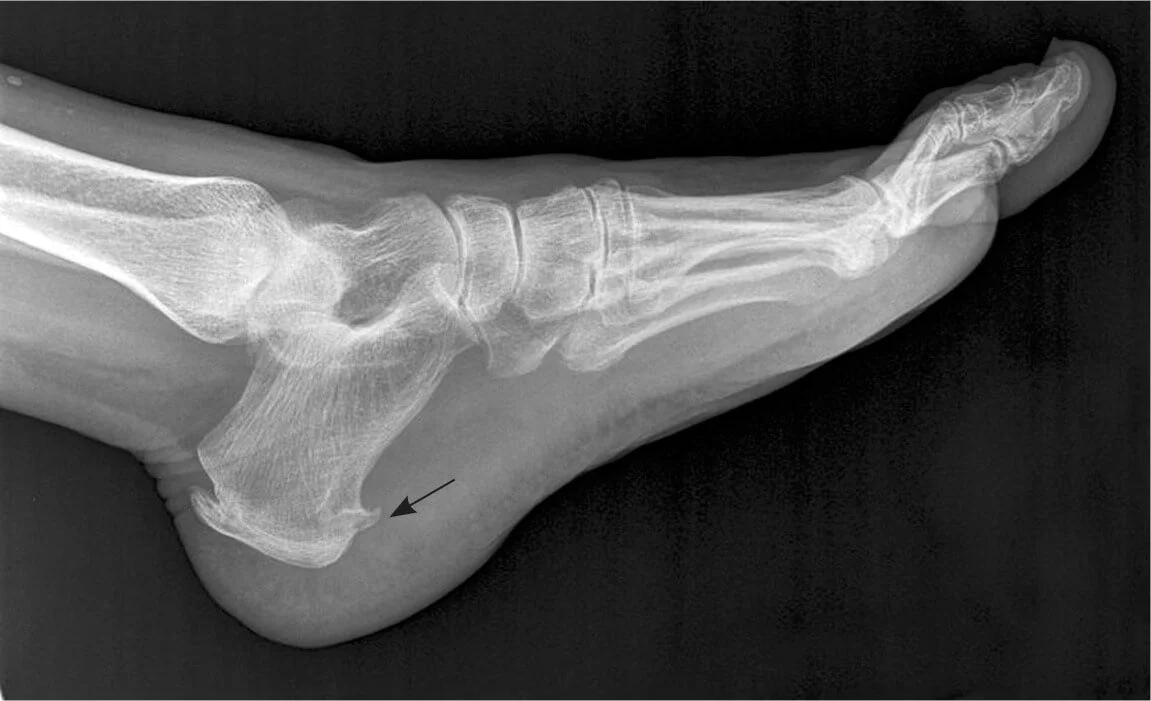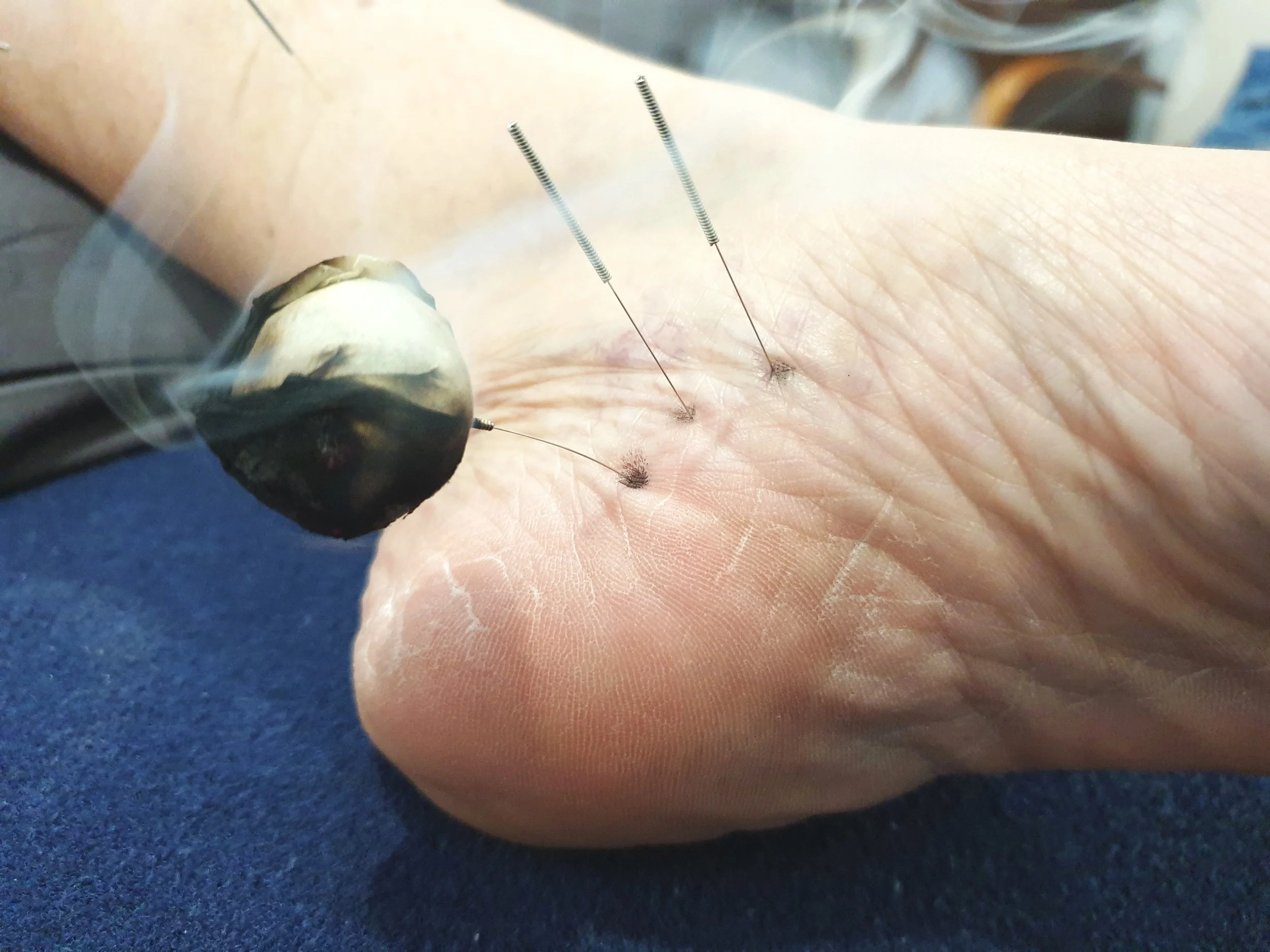Do you have a burning ache that spreads from your heel into your arches? Does pain strike when you take your first steps in the morning or after you’ve been inactive? Is it difficult to find relief, no matter what you do? Are you worried that you’ll be stuck with this problem forever?
Suffering from plantar fasciitis can be frustrating. But you’re not alone.
Almost one in five Aussies suffer from foot pain. Yet, not everyone with foot pain has this condition. This can lead to confusion and a missed diagnosis. The result? Continued, needless discomfort. Discomfort that can hamper — even strip — your quality of life.
But there is an answer.
Firstly, you need to understand what plantar fasciitis is and how it’s diagnosed so you can treat the right thing…
Secondly, you need to know which treatments have scientific backing. There is no point wasting your time and your money chasing the wrong form of care. (Sadly, many people do, resulting in ongoing pain)
Fortunately, acupuncture has shown much promise relieving this stubborn condition.
A 2017 preliminary review article analysed four randomised controlled trials — the gold standard in research — and found that acupuncture provided significant pain relief within 4-8 weeks of therapy.
However, there is more to the story.
In this article, I will share with you the little-known details I have discovered about plantar fasciitis from over 10 years of practice. You’ll learn everything you need to know in this easy-to-understand, science-backed resource about why acupuncture may be your best tool in the fight against plantar fasciitis.
Ok, so let’s find out if acupuncture for plantar fasciitis can be and effective solution.
Plantar fasciitis: a common cause of foot pain
If you’ve been suffering for months without relief, you are probably tired of family, friends, or strangers telling you about their experience with this wretched type of foot pain. See, plantar fasciitis is quite common.
In the USA it’s been estimated that around 1% of the population experiences this type of pain each year. This may not be true for every country but it is likely similar in other developed western countries, like our land down under.
To put that in perspective that equates to 259,158 Australians… each and every year. It’s no wonder others are keen to tell you about their experience!
What is plantar fasciitis? the common myth crippling your recovery
The plantar fascia is flat band of tissue that connects your heel bone to your toes. If you push into the arch of your foot, you will feel it. Its location is important as it supports the arch of your foot.
Conventional wisdom suggests that plantar fasciitis is an inflammation or irritation of the plantar fascia. In this diagnosis, that’s what the suffix “itis” refers to; inflammation. Unfortunately, this is not accurate. The reality is much murkier than most health professionals understand.
The term, then, can lead both those who treat this condition and those who have it astray. If we believe that inflammation is the cause, we take steps to reduce this process. However, studies have revealed that plantar fasciitis is rarely associated with actual inflammation. Instead it is associated with a type of tissue degeneration. This means many current treatments are misplaced and ineffective. Why? Because they do not address the cause.
Sounds serious, right?
Before you start worrying that your feet are rotting away beneath you, let’s unpack what this means.
Surprisingly, the absence of serious inflammation is common in pain conditions. For instance, most repetitive strain injuries are similar to plantar fasciitis and have little or no inflammation. Again, unfortunately, many of these pain conditions still have “itis” in their names. This often leads to the mistake that inflammation is a, even the main, problem.
But, to get relief from your plantar fasciitis, you need to know the truth: to understand the changes that are actually happening in your foot (or if you're unlucky, your feet). To explain, let's compare the two processes.
Acute inflammation
Have you ever fallen over and scrapped your knee or twisted an ankle while running? What did you notice? Swelling, heat, pain, redness, and maybe loss of function if you did a good job? These changes are called the five cardinal signs of inflammation.
Blood and fluid, healing cells and chemicals all rush in. Their role is to fix the injury. They act like the firefighters and ambulance officers: first in line to put out the flames or stem the bleeding. Once the area is safe, their job is done and the first responders leave.
This process of acute inflammation — itis — is not what happens in plantar fasciitis.
The process of plantar fasciitis
Instead of being acutely inflamed, the tissue of people with plantar fasciitis tends to be characterised by collagen degeneration.
Collagen is the most abundant protein in the body. Like scaffolding, it helps to hold the body together. This important building block is found throughout your tissues. Bones, muscles, skin, and tendons included. Yes, just like the tissue found in your plantar fascia.
Sometimes collagen breaks down. This process does contain subtle inflammation-like characteristics. But it is not anything like inflammation we just spoke about. Instead, we can think of it like a chronic low-grade burn.
This could explain a common failed treatment: The lack of acute inflammation may be why anti-inflammatory medications, like ibuprofen, are largely ineffective in the fight against plantar fasciitis.
Instead, technically, we should call the collagen degeneration and low-key inflammatory changes plantar fasciosis; not “itis.” They are signs of poor tissue health. Luckily, they rarely lead to anything catastrophic. Instead, we can think of this messy situation as a type of tissue fatigue that sensitises your pain system. It’s like an old fraying rope rather than a cable that’s been torn in two.
This difference matters. The right approach is how you find relief; the wrong approach can lead to stubborn plantar fasciitis that sticks around.
Soon, we'll answer important questions like: Why does plantar fasciitis hurt? Will plantar fasciitis ever heal? What plantar fasciitis treatment actually works? But first, we must talk about two fallacies; commonly accepted mistruths.
What about heel spurs?
Heel and arch pain can lead to a referral for an x-ray of your foot or feet. This can be a good idea to rule out certain causes and help to pinpoint a correct diagnosis. However, the results might reveal you have a heel spur. This can mislead treatment.
See, a heel spur certainly sounds like a believable reason for foot pain. After all, you might imagine this feels like stepping on a pointy spike. But, finding a heel spur on a scan is mostly incidental. In medicine, incidental means that it likely has nothing to do with your condition. This is the case for heel spurs and plantar heel pain.
Interestingly, spurs aren’t actually very boney. They are brittle calcifications of your plantar fascia. Picture stepping on a crispy potato chip rather than standing on a solid spike.
It is important to note that heel spurs are present in up to 20% of the population, not only the 1% who experience plantar fasciitis. So, no, heel spurs do not equal pain.
What about flat feet?
The soles of your feet should each have a substantial arch. This curve and its structures help your feet to move well, stay flexible, and remain strong and resilient. In flat feet, this arch drops.
Biomechanical issues — like flat feet — have been linked to plantar fasciitis. Many health professionals like to blame them for heel and arch pain. Unfortunately, these findings are just as common in pain-free populations.
For the overwhelming majority, changes to foot biomechanics, including flat feet, probably plays a trivial role in regard to foot pain. Similar ideas have been debunked for other pain conditions.
So, if your plantar fasciitis isn’t caused by heel spurs or flat feet, what is the culprit?
How does plantar fasciitis happen?
As we’ve already established, plantar fasciitis is a type of tissue fatigue. Unsurprisingly, then, it is connected to overuse and overloading. It’s related to wear and tear, like a car with its wheels out of alignment.
Plantar fasciitis is more common in:
People who engage in excessive standing, walking and running
People who have recently made changes in their exercise and lifestyle
People carrying excessive weight (although this could be more to do with unhealthy biology than mechanical weight)
People between the ages of 40 to 60
Some aftercare support exercises and shoe insoles can help you improve your condition of plantar fasciitis further.
Why does plantar fasciitis hurt?
If it’s not because of inflammation, heel spurs, or flat feet, why does plantar fasciitis hurt?
Here we must step into the weirdness of pain. The complexity of discomfort is why all honest health professionals face challenges in resolving it.
It has been well established that plantar fasciitis is linked to poor tissue health in the heel and arches. This may be very influential, at least at first. But is potentially not as influential as pain persists.
It is common for pain to be more debilitating and protracted than makes logical sense. This is because pain is not an accurate reflection of your tissue health. Rather, it is an uncomfortable feeling that occurs when your biology believes there is a need or benefit for protection.
Pain is produced in your brain. The sophisticated supercomputer in your head collates information sent to it from the body and other places within it. If the variety of cues suggest you may be in danger, pain will result.
Note: Pain is complicated. While we’ve been told otherwise, a large bulk of research has proven that it’s not all about tissue damage. If you'd like to know more about this read our eye-opening article, Your Guide To Pain Relief. (It's a short scroll from the top)
As you can see, it’s not as simple as it seems. The pain of plantar fasciitis isn’t driven by inflammation like you’d experience with a sprained ankle. It is more nuanced and tricky.
This complexity and chronicity is why treatment often fails. Health professionals can miss the importance of addressing the correct pathology; the actual problem. In doing so, they often recommend the wrong treatment and stop a speedier recovery. This can lead to stubbornplantar fasciitis that seems to never heal.
In fact, a journal article published in the Orthopaedic Journal of Sports Medicine found that, “The risk of having [plantar fasciitis] in this study was 45.6% at a mean 10 years after the onset of symptoms.”
In other words, left to its own devices, this condition is often intractable, difficult, pigheaded. After a decade, the study found that almost half the people with plantar fasciitis still had symptoms. If you are female or both your feet are affected, you’re at an increased risk. This means correct diagnosis and treatment is critical.
How plantar fasciitis is diagnosed?
Plantar fasciitis is usually diagnosed by the presence of distinctive signs and symptoms, including:
Burning or sharp pain at the heel and arch or arches
Pain that is worse after a period of sitting or rest. This is commonly expressed as morning pain
The onset of pain is gradual, unless there is a change in exercise, training, or lifestyle
Imaging studies, like x-rays, are not considered necessary. However, they can be useful in ruling out the presence of other pain conditions that might be confused for plantar fasciitis.
In addition, the imaging technique, ultrasound, may show thickening of the plantar fascia. This is correlated in people who suffer from plantar fasciitis; it provides an important clue.
What plantar fasciitis treatment actually works?
The best plantar fasciitis treatment is one that works, right? This must be based on clinical and scientific evidence.
For some, a little rest and a positive outlook will help plantar fasciitis disappear. (Yes, your mindset is a verified piece of the pain puzzle.) But, for many, support and appropriate treatment is required.
This condition can cause immense suffering that can detract from the things you value in life. And, as we've just seen, plantar fasciitis can stick around for years. When the stakes are high, you need to know what works.
Unfortunately, there are no certainties when it comes to the treatment of pain. Scientific research suggests that all treatments for pain — drugs, surgery, physical medicine, and others — may be only somewhat useful. There is no gold standard that works every time. This is also true when applied to plantar pain.
The reason is that pain is complicated.
However, don't despair. Just because there is no silver bullet, doesn’t mean there are no promising treatments at all.
Acupuncture for plantar fasciitis
Acupuncture is a promising treatment for plantar fasciitis.
In my clinic I treat plantar fasciitis frequently. Most patients have suffered between three months and two years by the time they reach my door. After having tried many other therapies, most are understandably sceptical. They wonder if acupuncture can really help.
The good news is that outright failure with treatment is uncommon. Most patients improve substantially or outright recover. An effective treatment plan usually requires between one to three months of care.
The research supports what I see in my clinic. Let’s take a look...
Review studies are powerful because they bring together multiple sources of research to reach more accurate conclusions.
One review article called How effective is acupuncture for reducing pain due to plantar fasciitis? investigated the effect of acupuncture on plantar fasciitis. The authors choose only randomised controlled trials — the gold standard in medical research. They concluded that, "Acupuncture significantly reduced pain levels in patients with plantar fasciitis.”
Another review study called The effectiveness of acupuncture for plantar heel pain: a systematic review found the same. The authors noted that, “There is evidence supporting the effectiveness of acupuncture… This is comparable to the evidence available for conventionally used interventions, such as stretching, night splints or dexamethasone.”
The research and my clinical experience both point in the same direction: acupuncture offers hope.
This form of therapy can have a positive effects on plantar pain and plantar fasciitis. It has a comparable level of evidence to conventional treatments such as stretching, night splints and dexamethasone. And, unlike many other options, acupuncture is incredibly safe, producing minimal, if any, side effects.
Are you ready to experience plantar fasciitis pain relief?
We provide acupuncture on the beautiful Gold Coast. Book your appointment online for a face-to-face appointment with us at our Traditional Acupuncture Clinic. We look forward to helping you find relief and the path to a happier, healthier life.
Author
Adam Hjort is a Registered Acupuncturist and member of Australian Acupuncture & Chinese Medicine Association (AACMA). He has been practicing since 2010 and maintains a clinic dedicated to the treatment of pain located in Ashmore, Gold Coast. This article was last updated 25th November 2021.







